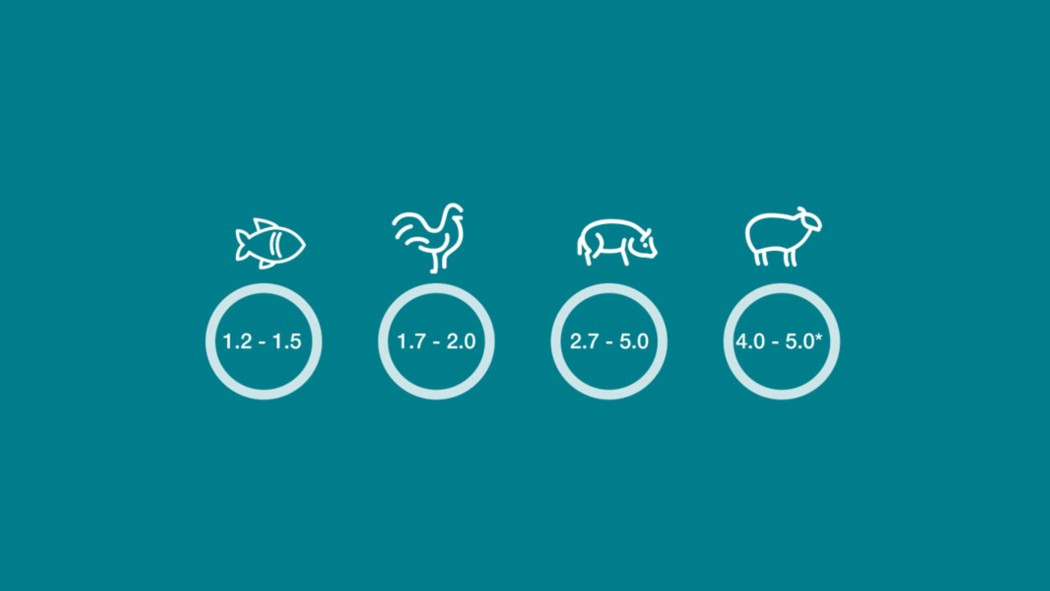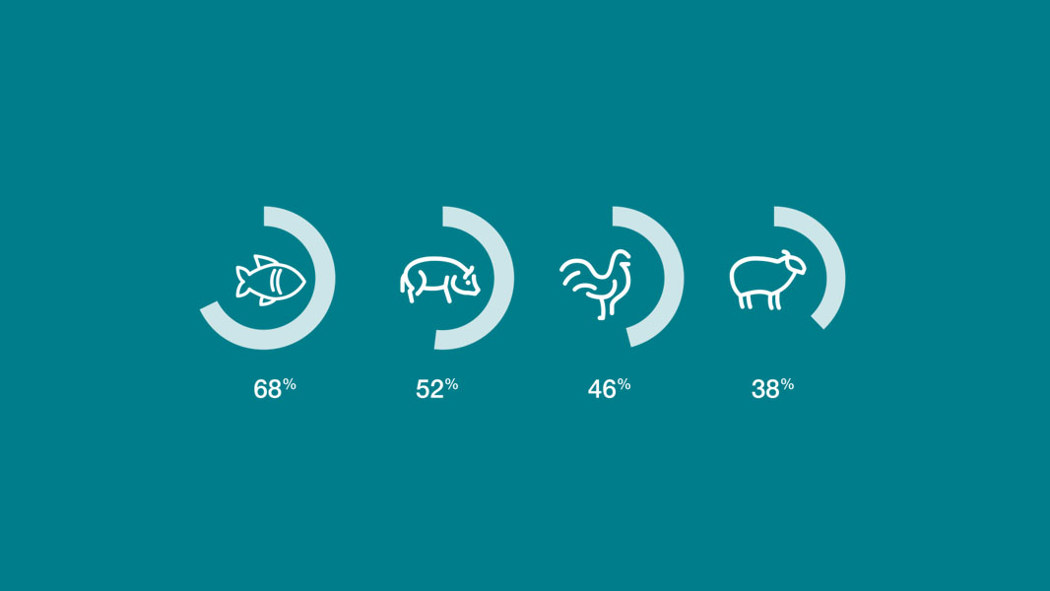How much feed is needed to grow a farmed fish?
Fish and shrimp are extremely efficient in converting feed into high-quality protein. On average, farmed fish require 1.1 kg of feed to gain 1 kg of body mass, compared with 1.7 kg for poultry and 6.6 kg for cattle.
Through a comprehensive understanding of the specific nutritional needs, Atlantic salmon is currently the most efficient animal to produce, with the lowest FCR.

Efficient protein
Fish are the most efficient animal to produce, as the feed conversion ratio (FCR) is so low. FCR is the amount of feed an animal needs to gain one kilogram of body weight.
Due to many years of research into the specific nutritional requirements, Atlantic salmon is now the most efficient animal to produce, with the lowest FCR. Typically Atlantic salmon needs 1.15 kg feed to gain 1 kg body weight. Pigs need more than twice as much food as salmon to gain 1 kg, while sheep need to eat almost six times as much.
Harvest yield
Fish also has a high harvest yield in comparison with other farmed animals. Harvest yield is the percentage of the animal left after inedible parts have been removed. For example, Atlantic salmon has a yield of an entire 68%. Chicken in comparison has a harvest yield of just 46%.


Making ponds more profitable for catfish farmers in Nigeria
Since 2015, we have partnered with Nutreco on the Catfish Sustainability Project (CSP) in Nigeria, working to enhance the production, profitability and environmental sustainability of catfish farming in the Ibadan region, while empowering small farmers to raise themselves out of poverty.